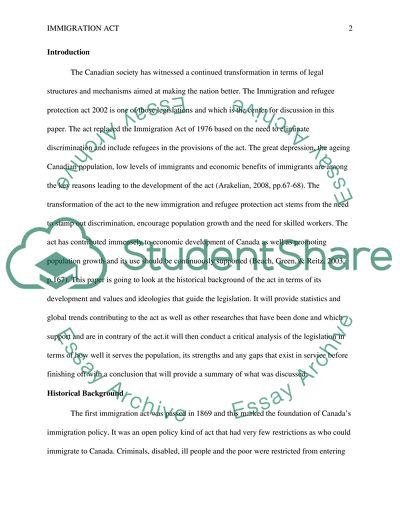Cite this document
(“The Immigration and Refugee Protection Act 2002 Essay”, n.d.)
Retrieved from https://studentshare.org/history/1460557--
Retrieved from https://studentshare.org/history/1460557--
(The Immigration and Refugee Protection Act 2002 Essay)
https://studentshare.org/history/1460557--.
https://studentshare.org/history/1460557--.
“The Immigration and Refugee Protection Act 2002 Essay”, n.d. https://studentshare.org/history/1460557--.


